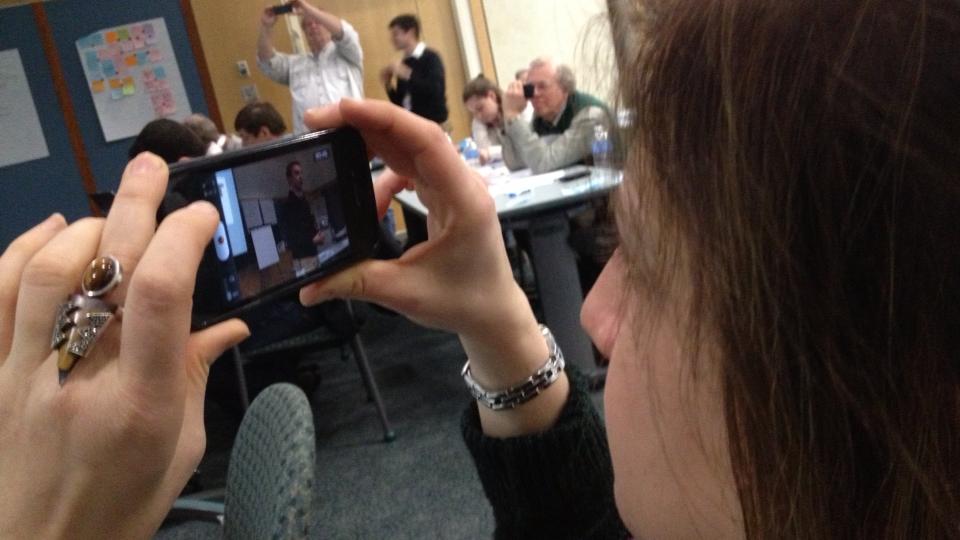I am exhausted.
For nearly two months now, I have been traveling on a special assignment for my parent company, Gannett. I am part of a 20-person team that is visiting newspapers around the country and teaching them the tools and techniques of video. Basically, our company is aiming to greatly boost the quantity and quality of video content on its’ newspapers’ web sites.
The initiative even has a hashtag: #turbovideo. Check it out on Twitter; the conversation is quite enlightening.
(Oh, and follow me while you’re at it: @MattPearl11.)
We began the project in January at the Asheville Citizen-Times in North Carolina. Since then I have traveled to Indianapolis, Asbury Park, N.J., Louisville, Wilmington, Del., Tallahassee, Fl., and now Westchester, N.Y. My fellow trainers and I spend a week at each publication; we discuss interviewing for video, writing for the ear instead of the eye, and using the iPhone both to shoot and edit video stories.
That’s right: we are teaching journalists how to produce video … on their iPhones.
Perhaps this sounds crazy; perhaps it seems amateurish. But I have been amazed at the results. Many journalists produce their first videos and tell compelling stories in the process; others, who have already cranked out videos in the past few years, quickly elevate their work after learning the techniques we teach.
As for the iPhone, it turns out Apple — along with Smartphone makers in general — has changed the game for media companies. Studies show that news consumers mainly care about content; they do not necessarily care about the medium by which they view said content. So, if you care about the Oscars, you will likely take in Oscars coverage in whatever form you can find, whether in writing, photos, audio, or video. You also will likely take in this content across numerous platforms: through traditional media, on your desktop or laptop, and on mobile devices like Smartphones and tablets.
The iPhone in particular has provided a great opportunity for media outlets. Journalists have never have an easier, more efficient way of producing and presenting videos; they can shoot and edit video packages in minutes, and they can upload those videos to their publications’ web sites in even less time. Much like how mobile devices have made photographs more ubiquitous than ever (could you have ever imagined a site like Instagram 15 years ago?), they are now doing the same for video. Anyone can produce a video, so why shouldn’t our finest journalists?
The Turbovideo initiative has been tasked with achieving ambitious goals for Gannett publications; time will tell if those publications reach those marks. But on a fundamental level, it marks a dynamic shift in the way these newspapers are covering news. Each reporter and photojournalist within Gannett has been given an iPhone; each will now be expected to produce video, particularly in breaking news situations where that person is the only one on the scene.
I, for one, am proud to have been a part of the program. As a broadcast guy, I have taken great pleasure in immersing myself in the newspaper world; I love to read and have always loved print journalism, and I LOVE great writing. Through Turbovideo, I have received the chance to work with talented people across all media (including from my hometown paper, the Home News Tribune in New Jersey); I have seen similar opportunities for how the broadcast side can benefit; and I have helped launch an initiative that should prove to have staying power in a changing media landscape.
When I think about all that, I suddenly don’t mind being exhausted.
*****
This post can also be found at 11Alive.com. If you have any comments or questions, you can comment below or e-mail Matt at matt@tellingthestoryblog.com.

2 thoughts on “Taking #Turbovideo into warp speed”